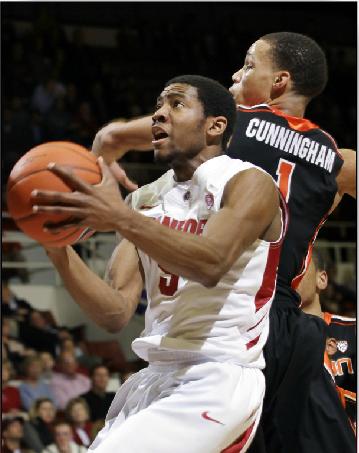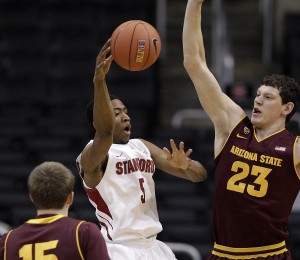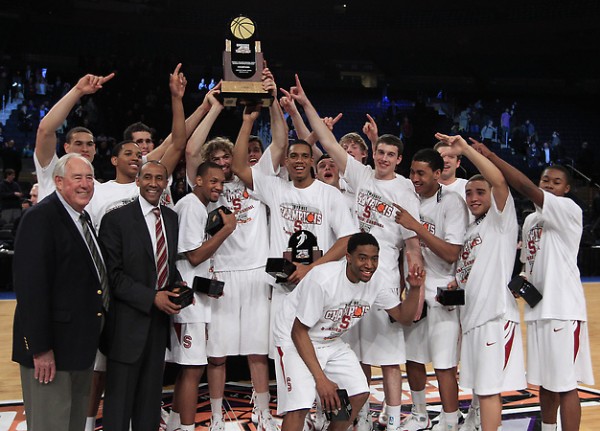Pac-12 Team Previews: Stanford Cardinal
Posted by KDanna on October 12th, 2012Throughout the preseason, the Pac-12 microsite will be rolling out these featured breakdowns of each of the 12 league schools. Today’s release are the Stanford Cardinal
Strengths: The tandem of junior Aaron Bright and sophomore Chasson Randle in the backcourt is shaping up to be one of the most dynamic duos in the Pac-12. The diminutive Bright has some characteristics reminiscent of other small guys who made names for themselves in the Seattle area, most notably the moxie to take and make big shots for his team. While he might not have the speed of a Nate Robinson or Isaiah Thomas, Bright can still get into the lane and distribute with some flashy passes. However, he doesn’t break down defenses as well as Randle, who may very well be the most significant guard to come through The Farm since Brevin Knight when it’s all said and done. Randle finished second among Pac-12 freshmen in scoring, behind only the NBA-bound Tony Wroten. The Rock Island, IL native displayed an ability to go into “put the team on my back” mode during his freshman campaign, highlighted by the 24 points he scored to lead Stanford in its 103-101 quadruple-overtime victory at Oregon State.

Chasson Randle did more than hold up his jersey during Stanford’s quadruple-overtime victory over Oregon State (credit: Rick Bowmer)
Weaknesses: Stanford is going to be physically light down low with the departures of Josh Owens and Andrew Zimmermann. While the Cardinal have to potential to be a good rebounding team again with guys like Dwight Powell and Josh Huestis still in town to crash the glass, Stanford will have to make up for a lot of toughness lost with Owens and Zimmermann gone. Although Owens was the better athlete, Zimmermann might end up being a bigger loss for head coach Johnny Dawkins. He was a guy who did all of the little things in the paint, including taking charges and talking on defense (he didn’t have a bad jump shot, either). As such, this group also needs to find a vocal leader. That might be tough, considering none of the major rotation players are seniors and haven’t been called on to be captains before.
















































